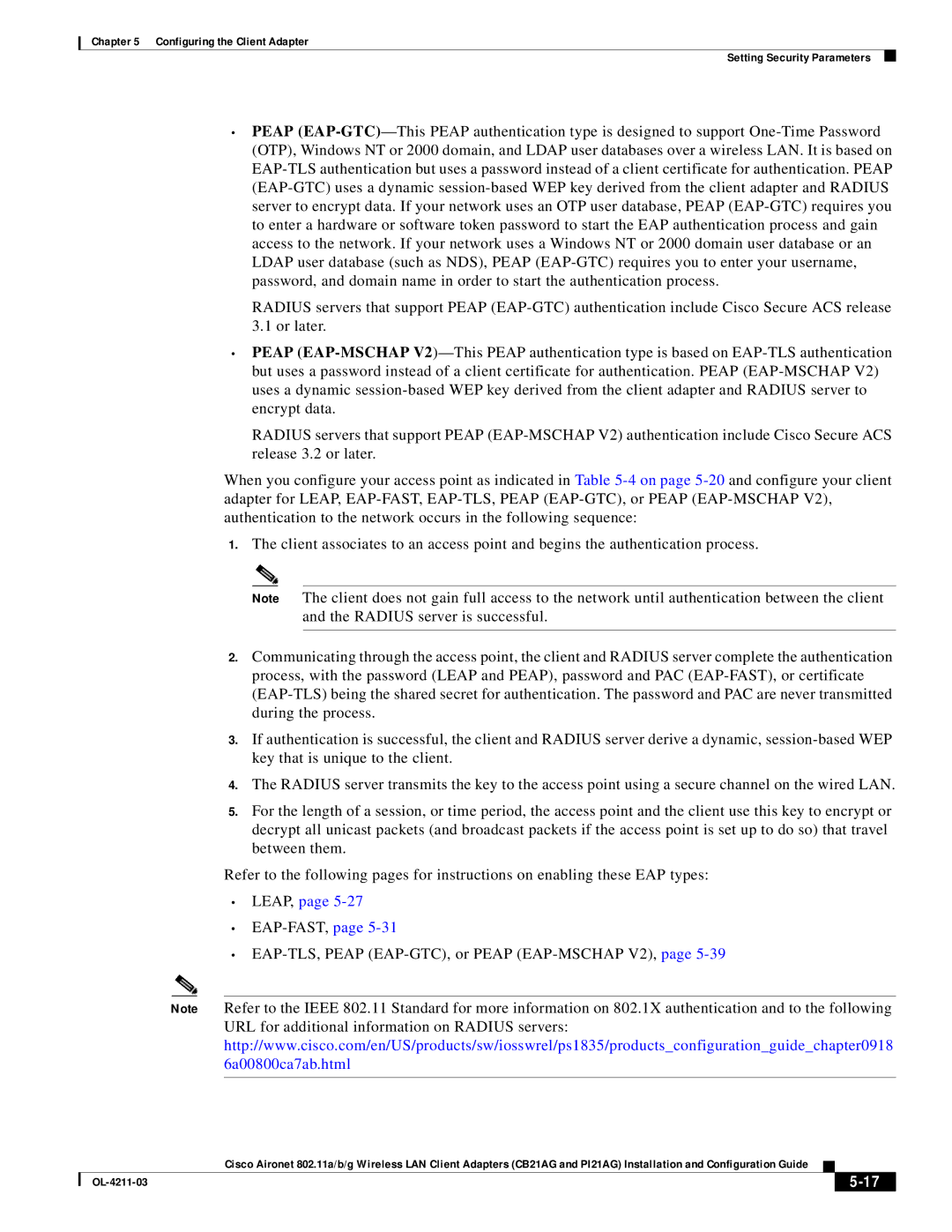
Chapter 5 Configuring the Client Adapter
Setting Security Parameters
•PEAP
RADIUS servers that support PEAP
•PEAP
RADIUS servers that support PEAP
When you configure your access point as indicated in Table
1.The client associates to an access point and begins the authentication process.
Note The client does not gain full access to the network until authentication between the client and the RADIUS server is successful.
2.Communicating through the access point, the client and RADIUS server complete the authentication process, with the password (LEAP and PEAP), password and PAC
3.If authentication is successful, the client and RADIUS server derive a dynamic,
4.The RADIUS server transmits the key to the access point using a secure channel on the wired LAN.
5.For the length of a session, or time period, the access point and the client use this key to encrypt or decrypt all unicast packets (and broadcast packets if the access point is set up to do so) that travel between them.
Refer to the following pages for instructions on enabling these EAP types:
•LEAP, page 5-27
•EAP-FAST, page 5-31
•EAP-TLS, PEAP (EAP-GTC), or PEAP (EAP-MSCHAP V2), page 5-39
Note Refer to the IEEE 802.11 Standard for more information on 802.1X authentication and to the following URL for additional information on RADIUS servers: http://www.cisco.com/en/US/products/sw/iosswrel/ps1835/products_configuration_guide_chapter0918 6a00800ca7ab.html
Cisco Aironet 802.11a/b/g Wireless LAN Client Adapters (CB21AG and PI21AG) Installation and Configuration Guide
|
| ||
|
|
